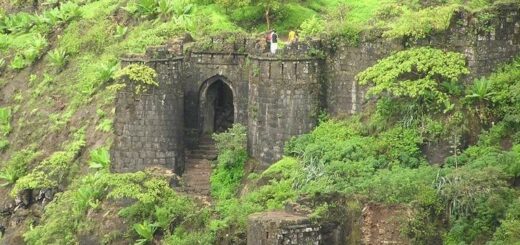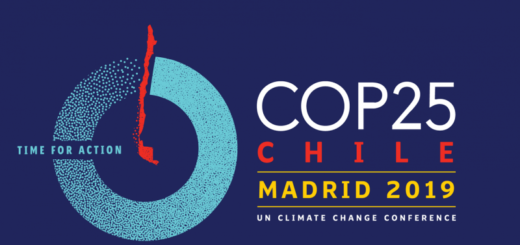National Current Affairs – UPSC/KAS Exams- 19th March 2019
Japan to make crater on asteroid
Topic: Science and Technology
In News: Japan’s space agency said that its Hayabusa2 spacecraft will drop an explosive on an asteroid to make a crater and then collect underground samples for possible clues to the origin of the solar system.
About Hyabusa 2:
- Hayabusa2 is an asteroid sample-return mission operated by the Japanese space agency, JAXA.
- It follows on from Hayabusa mission which returned asteroid samples in 2010.
- Hayabusa2 was launched on 3 December 2014 and rendezvoused with near-Earth asteroid 162173 Ryugu.
- It is in the process of surveying the asteroid for a year and a half, departing in December 2019, and returning to Earth in December 2020.
- Hayabusa2 carries multiple science payloads for remote sensing, sampling, and four small rovers that will investigate the asteroid surface to inform the environmental and geological context of the samples collected.
About Asteroid Ryugu:
- Asteroid Ryugu is a primitive carbonaceous near-Earth asteroid. Carbonaceous asteroids are expected to preserve the most pristine materials in the Solar System, a mixture of minerals, ice, and organic compounds that interact with each other.
- Studying it is expected to provide additional knowledge on the origin and evolution of the inner planets and, in particular, the origin of water and organic compounds on Earth,all relevant to the origin of life on Earth.
Source:Hindu
Life imprisonment is the rule, death penalty the exception: SC
Topic: Polity and Governance
In News: If a court finds it difficult to make a choice between death penalty and life imprisonment, it should opt for the lesser punishment, the Supreme Court said in a recent judgment.
More on the Topic:
- Accprding to the verdict,Life imprisonment is the rule to which the death penalty is the exception. The death sentence must be imposed only when life imprisonment appears to be an altogether inappropriate punishment, having regard to the relevant facts and circumstances of the crime.
About Capital Punishment in India:
- Capital punishment is a legal penalty in India. It has been carried out in five instances since 1995,while a total of twenty-six executions have taken place in India since 1991, the most recent of which was in 2015.
- In December 2007, India voted against a United Nations General Assembly resolution calling for a moratorium on the death penalty.In November 2012, India again upheld its stance on capital punishment by voting against the UN General Assembly draft resolution seeking to end the institution of capital punishment globally.
- On 31 August 2015, the Law Commission of India submitted a report to the government which recommended the abolition of capital punishment for all crimes in India, excepting the crime of waging war against the nation or for terrorism-related offences.
- The report cited several factors to justify abolishing the death penalty, including its abolition by 140 other nations, its arbitrary and flawed application and its lack of any proven deterring effect on criminal.
- The Constitution Bench judgment of Supreme Court of India in Bachan Singh vs. State of Punjab (1980) made it very clear that Capital punishment in India can be given only in rarest of rare cases.
- According to Article 72(1) of the Constitution of India The President shall have the power to grant pardons, reprieves, respites or remissions of punishment or to suspend, remit or commute the sentence of any person convicted of any offence in all cases where the sentence is a sentence of death.
Source: The Hindu
‘Sary-Arka-Antiterror 2019’
Topic: International Relations
In News: India, Pakistan and the other members states of the Shanghai Cooperation Organisation (SCO) will take part in a joint anti-terrorism exercise to be held this year by the grouping.
More on the topic:
- The decision to hold the joint exercise ‘Sary-Arka-Antiterror 2019’ was announced during the 34th meeting of the SCO’s Regional Anti-Terrorist Structure (RATS) council held in Tashkent, Uzbekistan.
Shanghai Cooperation Organisation:
- The Shanghai Cooperation Organization (SCO), or Shanghai Pact is a Eurasian political, economic, and security alliance, the creation of which was announced on 15 June 2001 in Shanghai, China by the leaders of China, Kazakhstan, Kyrgyzstan, Russia, Tajikistan, and Uzbekistan; the Shanghai Cooperation Organisation Charter, formally establishing the organisation, was signed in June 2002 and entered into force on 19 September 2003.
- The original five nations, with the exclusion of Uzbekistan, were previously members of the Shanghai Five group, founded on 26 April 1996. Since then, the organisation has expanded its membership to eight countries when India and Pakistan joined SCO as full members on 9 June 2017 at a summit in Astana, Kazakhstan.
- The Heads of State Council (HSC) is the supreme decision-making body in the SCO, it meets once a year and adopts decisions and guidelines on all important matters of the organisation.
- Military exercises are also regularly conducted among members to promote cooperation and coordination against terrorism and other external threats, and to maintain regional peace and stability.
About RAAT:
- RATS is a permanent organ of the SCO which serves to promote cooperation of member states against the three evils of terrorism, separatism and extremism. It is headquartered in Tashkent. The next meeting of the Council of the RATS SCO is scheduled to be held in Russia in September 2019.
Source: The Hindu
Cyclone Idai
Topic: Environment and Ecology
In News: Intense Tropical Cyclone Idai was the strongest tropical cyclone to strike Mozambique since Jokwe in 2008 and the deadliest tropical cyclone worldwide in 2019.
More On the Topic:
- The tenth named storm and record-breaking seventh intense tropical cyclone of the 2018–19 South-West Indian Ocean cyclone season, Idai originated from a tropical depression that formed off the eastern coast of Mozambique. The depression made landfall in the aforementioned country later in the day and remained a tropical cyclone throughout the entirety of its trek over land.
- Idai brought strong winds and caused severe flooding in Madagascar, Malawi, Zimbabwe, and Mozambique.
About Tropical Cyclone:
- Tropical cyclones are regarded as one of the most devastating natural calamities in the world.
- They originate and intensify over warm tropical oceans.
- These are ferocious storms that originate over oceans in tropical areas and move over to the coastal areas causing violent winds, very heavy rainfall, and storm outpourings.
Names of cyclone in different regions:
- Cyclones in the Indian Ocean
- Hurricanes in the Atlantic
- Typhoons in the Western Pacific and the South China Sea
- Willy-willies in Western Australia
Formation of Cyclone:
- The energy that strengthens the storm comes from the condensation process in the towering cumulonimbus clouds, surrounding the centre of the storm.
- With uninterrupted supply of moisture from the sea, the storm is again strengthened.
- On reaching the terrestrial region the moisture supply is cut off and the storm dissipates.
- The place where a tropical cyclone cuts the coast is called the landfall of the cyclone.
- A landfall is frequently accompanied by sturdy winds, heavy rain and mounting sea waves that could threaten people and cause damage to properties.
- Cyclones which cross 20 degrees North latitude are more destructive.
- They cover a larger area and can originate over the land and sea whereas the tropical cyclones originate only over the seas and on reaching the land they dissipate.
- Model Mains Question:What are the conditions necessary for formation of cyclones? Explain how the cyclones are named.
Source:The Hindu
Kashi Vishwanath Corridor
Topic: Culture
In News: Prime Minister has laid the foundation stone for the Kashi Vishwanath corridor recently.
More on the Topic:
- Kashi Vishwanath Temple is one of the most famous Hindu temples dedicated to Lord Shiva, It is located in Varanasi.
- The temple stands on the western bank of the holy river Ganga, and is one of the twelve Jyotirlingas.
- Recently Kashi Vishwanath corridor project has been inaugurated by union government which envisions a massive makeover of the holy shrine and its surrounding areas.
- The proposed 50-feet corridor will directly connect Ganga’s Manikarnika and LalitaGhat to the Kashi Vishwanath Jyotirlinga Temple.
- This massive makeover is the first after the 1780 AD when the Maratha queen AhilyabaiHolkar of Indore renovated the temple and the area surrounding it.
Source: The Hindu
India Trde deficit –New trend
Topic: Economy
In News: India’s trade deficit shrank to a 17-month low in February, 2019 according to the data recently released by the Union ministry of commerce.
More on the Topic:
- Trade deficit is the difference between a country’s exports and imports.
- India’s exports rose 2.44% from a year ago to $26.7 billion and imports contracted by 5.4%.This led to a decline in the trade deficit to $9.6 billion.
- The trade deficit was $14.73 billion in January and $12.3 billion in February of the previous year.The previous low for the trade gap was $9.4 billion in September 2017.
- The narrowing of the trade deficit is the result of a sharp fall in import of oil, gold and electronics.In February, import of oil, gold and electronic items declined by 8%, 10.81% and 6.5%, respectively.
- Notably, these are the items that generally form the bulk of the country’s import bill.
- India’s overall exports (merchandise and services combined) in April-February 2018-19 exhibited a positive growth of 8.73% over the same period last year.
- The major commodity groups of export showing positive growth were organic and inorganic chemicals, drugs and pharmaceuticals, and ready-made textiles.
The way Ahead:
- The effect of the global tariff war and the recent rise in crude oil prices due to supply cuts has impacted India’s trade.
- There has been some improvement in terms of permission and ease of doing business over the past few years.
- But these are not enough to ensure competitiveness in export.
- It is not realistic, therefore, to expect a sharp upturn in the short or medium run for Indian exports in these sectors.
- The recently revoked preferential benefits to Indian exports by the US will only make it tougher for certain export sectors to recover.
- This is particularly true of Indian engineering exports, which will have to deal with tighter competition from zero-tariff countries.
Source: The Hindu



















